Traditional Seafood Paella Recipe: A Taste of Singapore's Authentic Delight!
Seafood paella is a traditional Spanish dish that has become increasingly popular in Singapore. This rice-based dish is typically made with saffron, seafood, and a variety of vegetables, giving it a unique and delicious flavour. If you're looking to try this dish for yourself, it's important to understand the essential ingredients and techniques needed to create an authentic seafood paella.
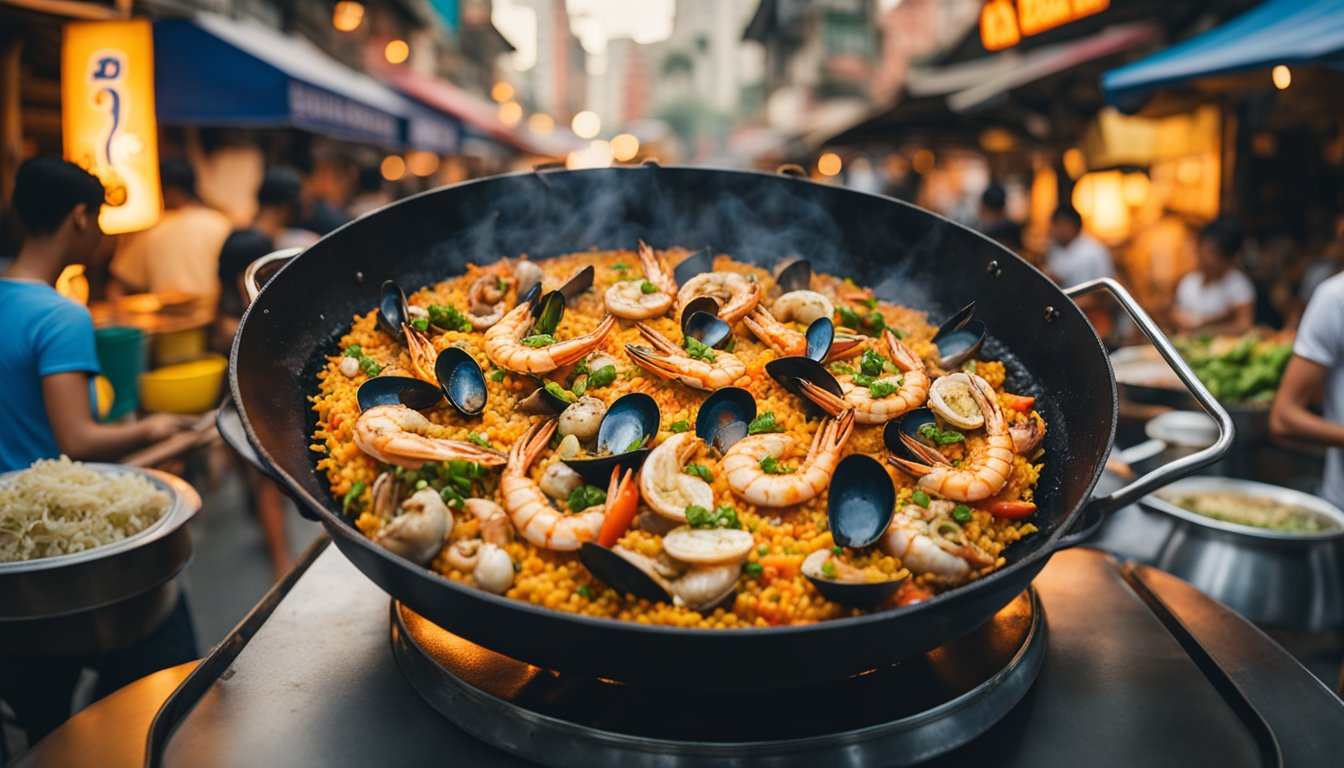
Exploring the Origins of Paella is an interesting topic to start with. Paella is a dish that originated in Valencia, Spain, and was traditionally made with rabbit, chicken, and snails. Over time, seafood was added to the dish, and it became the paella we know and love today. In Singapore, seafood paella has become a popular dish, often served at special events or family gatherings. Whether you're new to this dish or a seasoned pro, it's always good to know the history and origins of the food you're eating.
Key Takeaways
- Seafood paella is a traditional Spanish dish that has become popular in Singapore.
- The dish originated in Valencia, Spain, and was traditionally made with rabbit, chicken, and snails.
- Understanding the history and essential ingredients of seafood paella can help you create an authentic and delicious dish.
Exploring the Origins of Paella
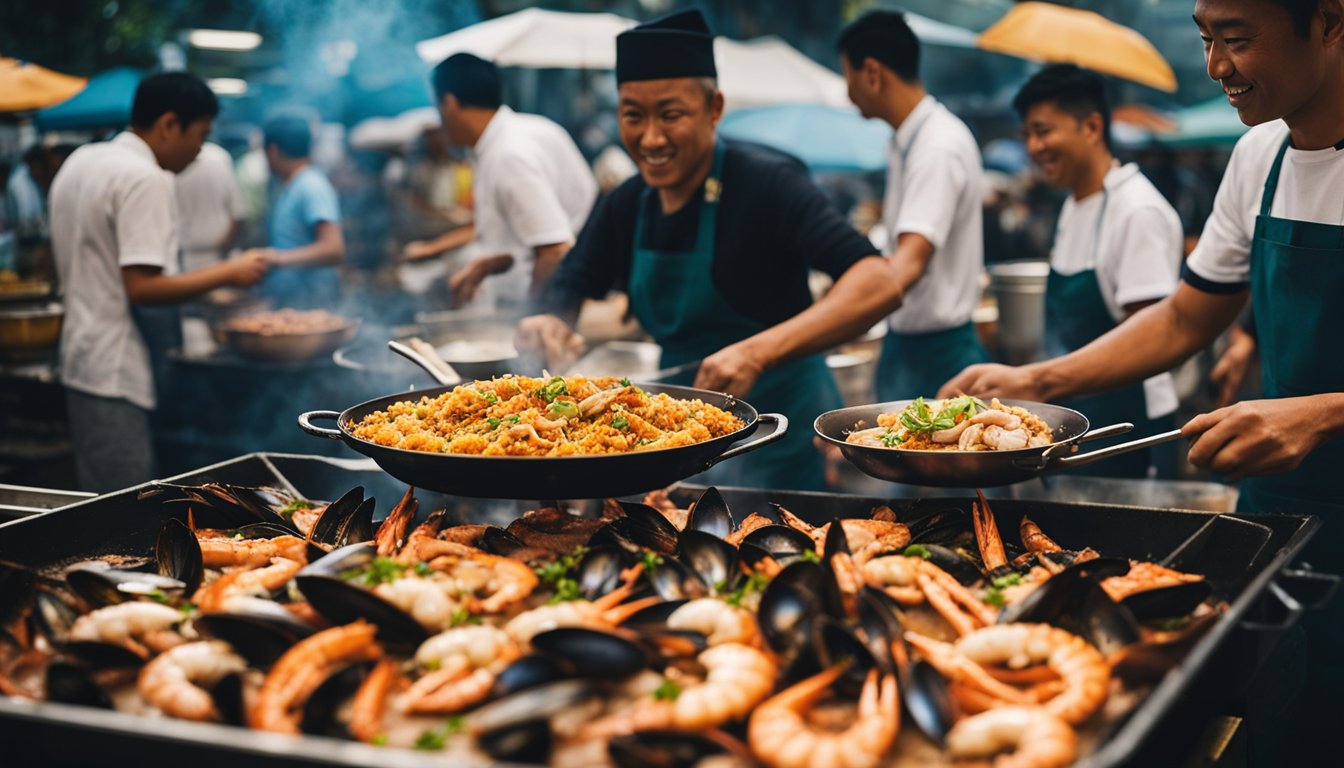
If you're a seafood lover, chances are you've heard of Paella. This traditional Spanish dish has become a popular staple in many Singaporean restaurants. But where did this dish come from, and how did it evolve over time?
Spanish Culinary Influence in Singapore
Singapore has a long history of Spanish influence, dating back to the 16th century when the Spanish first arrived in Southeast Asia. Over time, Spanish cuisine has become an integral part of Singaporean culture, with dishes like Paella gaining popularity in recent years.
One reason for this is the large Spanish expat community in Singapore, who have brought their culinary traditions with them. Additionally, Singapore's location as a hub for international trade has made it a melting pot of cultures, with Spanish cuisine being one of the many influences on the local food scene.
Evolution of Seafood Paella
The origins of Paella can be traced back to Valencia, a region on the eastern coast of Spain. Originally, Paella was a peasant dish made with whatever ingredients were available, including rabbit, chicken, and snails. Over time, seafood was added to the dish, and it became known as Seafood Paella.
Today, Seafood Paella is made with a variety of seafood, including shrimp, mussels, and squid, as well as rice, saffron, and other spices. The dish is typically cooked in a large, shallow pan called a paellera, which gives the dish its distinctive shape and allows the rice to cook evenly.
Whether you're a fan of traditional Spanish cuisine or just looking for a new seafood recipe to try, Seafood Paella is a delicious and satisfying dish that is sure to impress.
Essential Ingredients for Seafood Paella
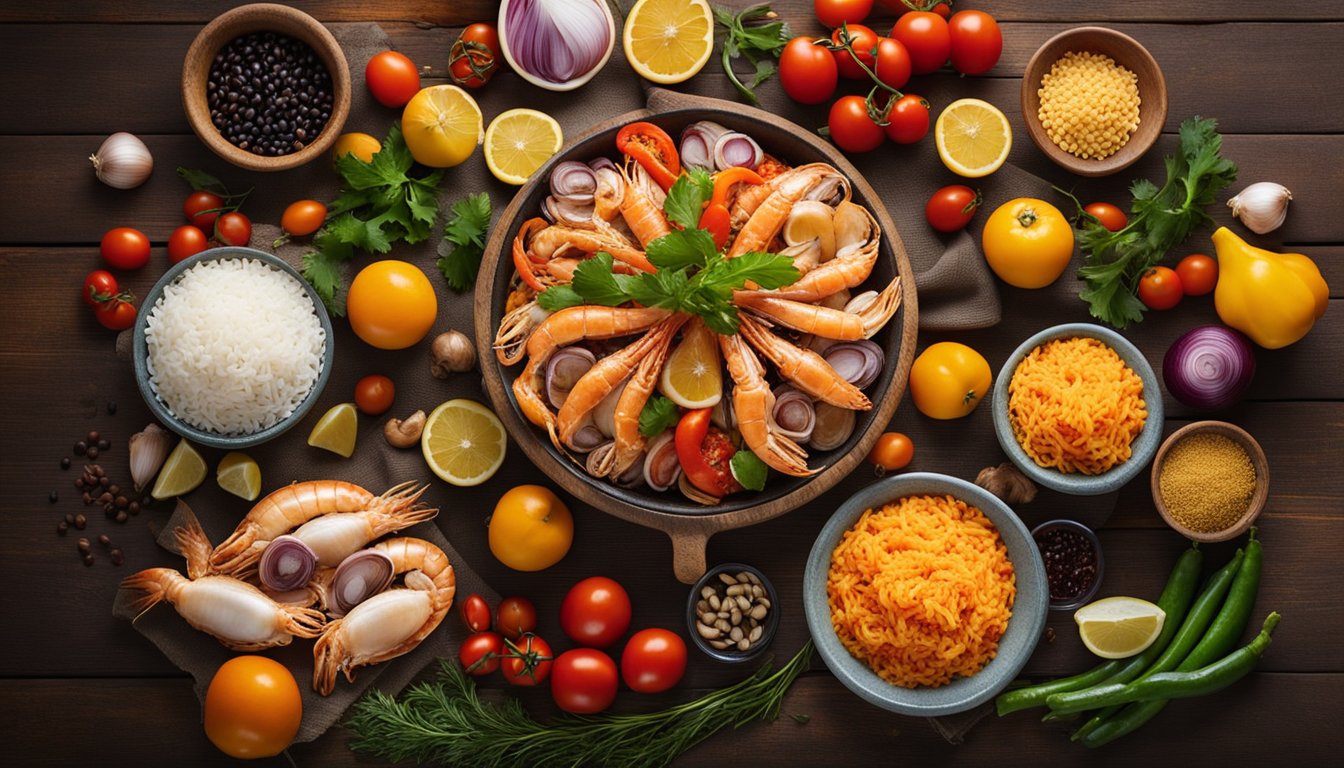
Making a traditional seafood paella requires a careful selection of ingredients to create a flavourful and authentic dish. Here are some essential ingredients that you should consider when making this Spanish-inspired dish.
Selecting the Right Seafood
Seafood is the star of the show when it comes to making a seafood paella. It is important to choose fresh and high-quality seafood to ensure that your paella is delicious and flavourful. Some of the best seafood options for paella include mussels, clams, prawns, squid, and fish. When selecting your seafood, make sure that it is fresh and cleaned properly. You can also experiment with different types of seafood to create your own unique paella recipe.
Authentic Spices and Herbs
Spices and herbs are an important part of making a delicious seafood paella. Some of the essential spices and herbs that you should include are saffron, smoked paprika, garlic, and parsley. Saffron is a key ingredient in paella and gives the dish its distinctive yellow colour. Smoked paprika adds a smoky flavour to the dish, while garlic and parsley provide a fragrant aroma and fresh taste.
Rice and Stock Choices
The rice used in paella is also an important factor in creating the perfect dish. Short-grain rice is the best choice for paella as it is able to absorb the flavours of the other ingredients and maintain its texture during cooking. Bomba rice and Calasparra rice are two popular choices for paella. When it comes to stock, chicken stock is the most commonly used in seafood paella. However, you can also use fish stock or a combination of both for a richer flavour.
By selecting the right seafood, authentic spices and herbs, and the right rice and stock choices, you can create a delicious and authentic seafood paella that is sure to impress your guests.
Cooking Techniques and Tips
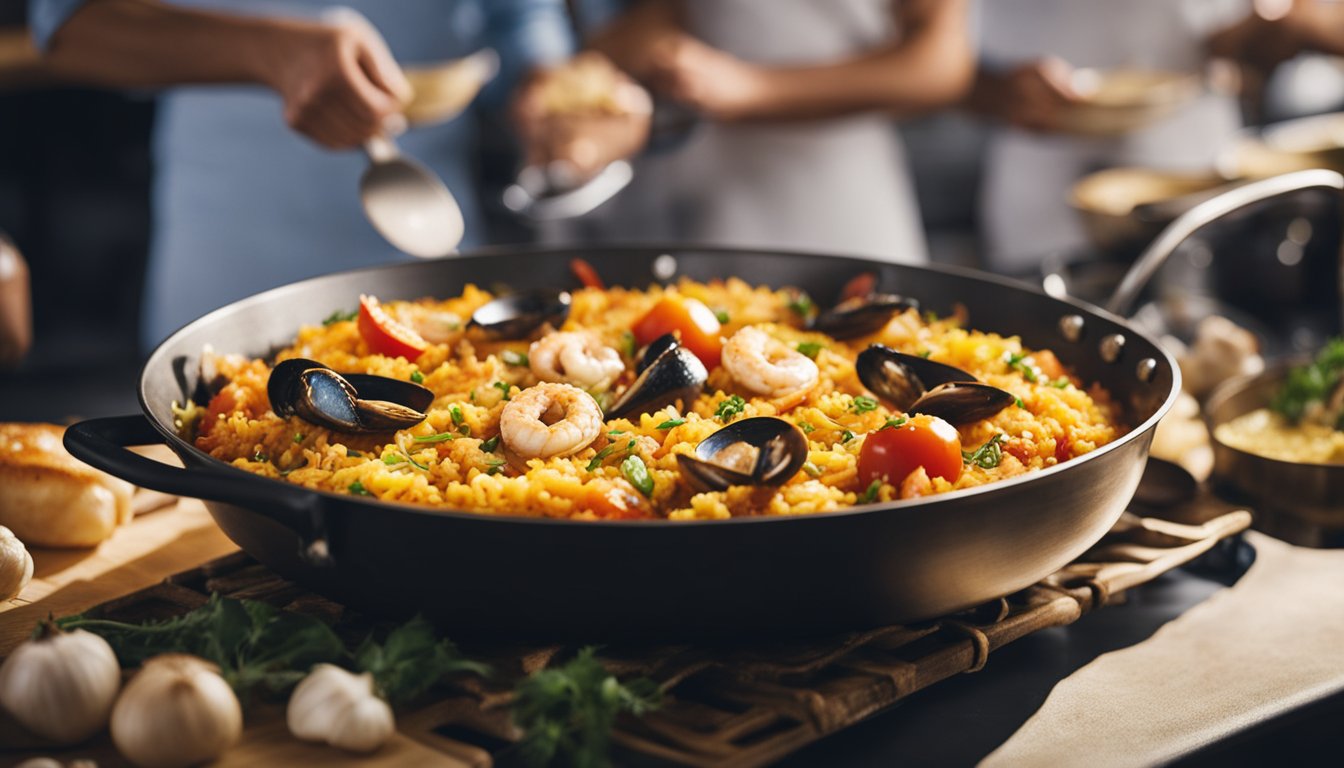
Mastering the Paella Pan
The paella pan is an essential tool for making this traditional Spanish dish. It is a wide, shallow pan with low sides, which allows for even cooking and the development of the socarrat. When selecting a paella pan, choose one that is made of high-quality materials, such as carbon steel or stainless steel, as this will ensure even heat distribution and prevent sticking.
Perfecting the Socarrat
The socarrat is the crispy layer of rice that forms on the bottom of the paella pan. It is a prized aspect of the dish and requires some skill to achieve. To develop the socarrat, you must allow the rice to cook undisturbed for a few minutes after adding the stock. Once the liquid has been absorbed, increase the heat to high for a few minutes to create the crispy layer. To prevent burning, it is important to monitor the heat and adjust it accordingly.
Managing the Heat
Maintaining the correct heat is crucial when making seafood paella. Too high heat can cause the rice to cook too quickly, while too low heat can result in undercooked rice. To achieve the perfect heat, start by cooking the sofrito (onions, garlic, and tomatoes) over medium heat until they are soft and fragrant. Then, add the rice and stir it for a few minutes until it is coated in the sofrito. After adding the stock, reduce the heat to low and let it cook undisturbed until the liquid has been absorbed. If the rice is not cooked through, add more stock and continue cooking until it is done.
By mastering these techniques and tips, you can create a delicious and authentic seafood paella that will impress your family and friends.
Serving and Presentation
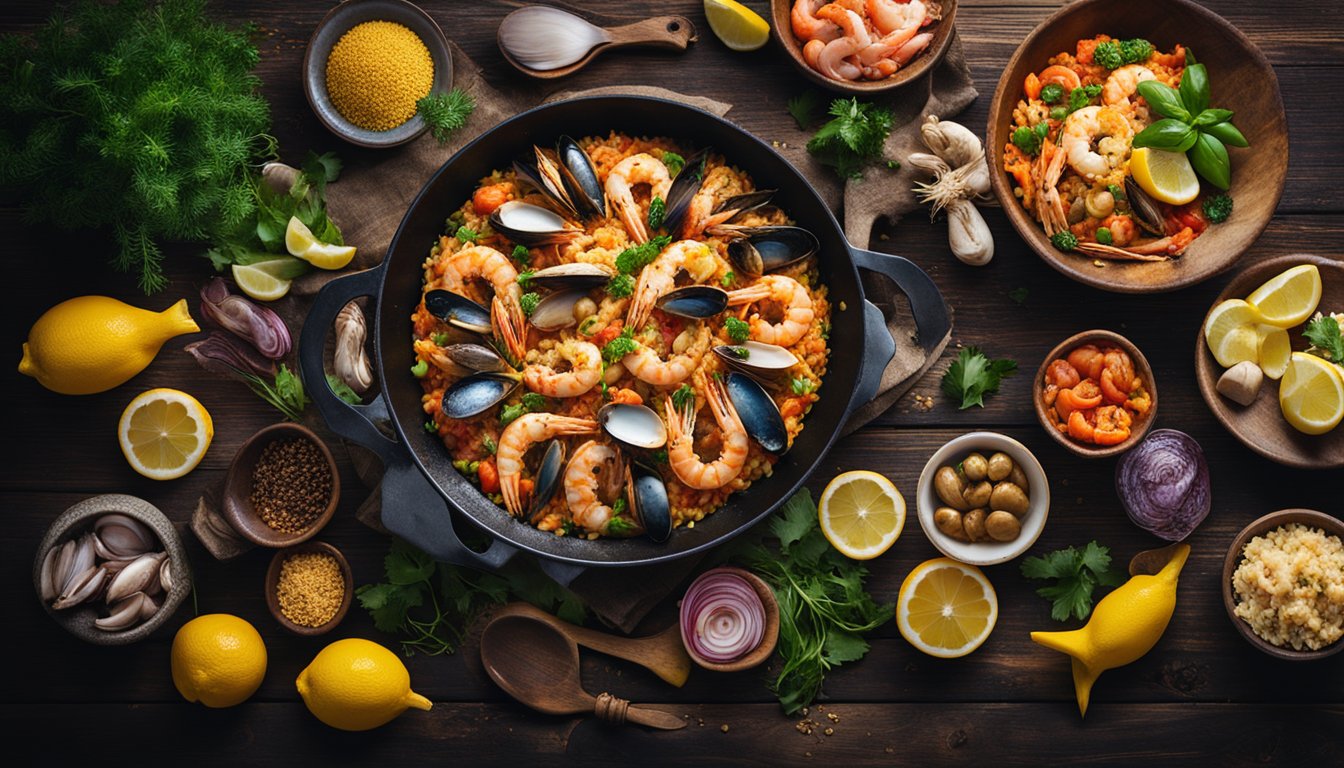
When it comes to serving and presentation of traditional seafood paella recipe in Singapore, there are a few things to keep in mind.
Garnishing for Visual Appeal
To make your seafood paella visually appealing, garnishing is key. Try adding a sprig of fresh parsley or coriander on top of the dish. You can also sprinkle some lemon zest or chopped olives for added flavour and texture. Another option is to add some cherry tomatoes or sliced capsicum on top to add some colour.
Pairing with Beverages
Pairing your seafood paella with the right beverage can enhance the overall dining experience. A crisp white wine such as Sauvignon Blanc or Pinot Grigio pairs well with seafood. If you prefer something stronger, a light-bodied red wine such as Pinot Noir or a fruity sangria can also complement the dish. For non-alcoholic options, try serving iced tea or a citrus-based mocktail to balance the richness of the paella.
Remember, presentation is key when it comes to seafood paella. Use a large, shallow pan to showcase the colourful ingredients and serve the dish hot for maximum flavour. With these tips, you can impress your guests with a delicious and visually stunning traditional seafood paella recipe in Singapore.
Frequently Asked Questions
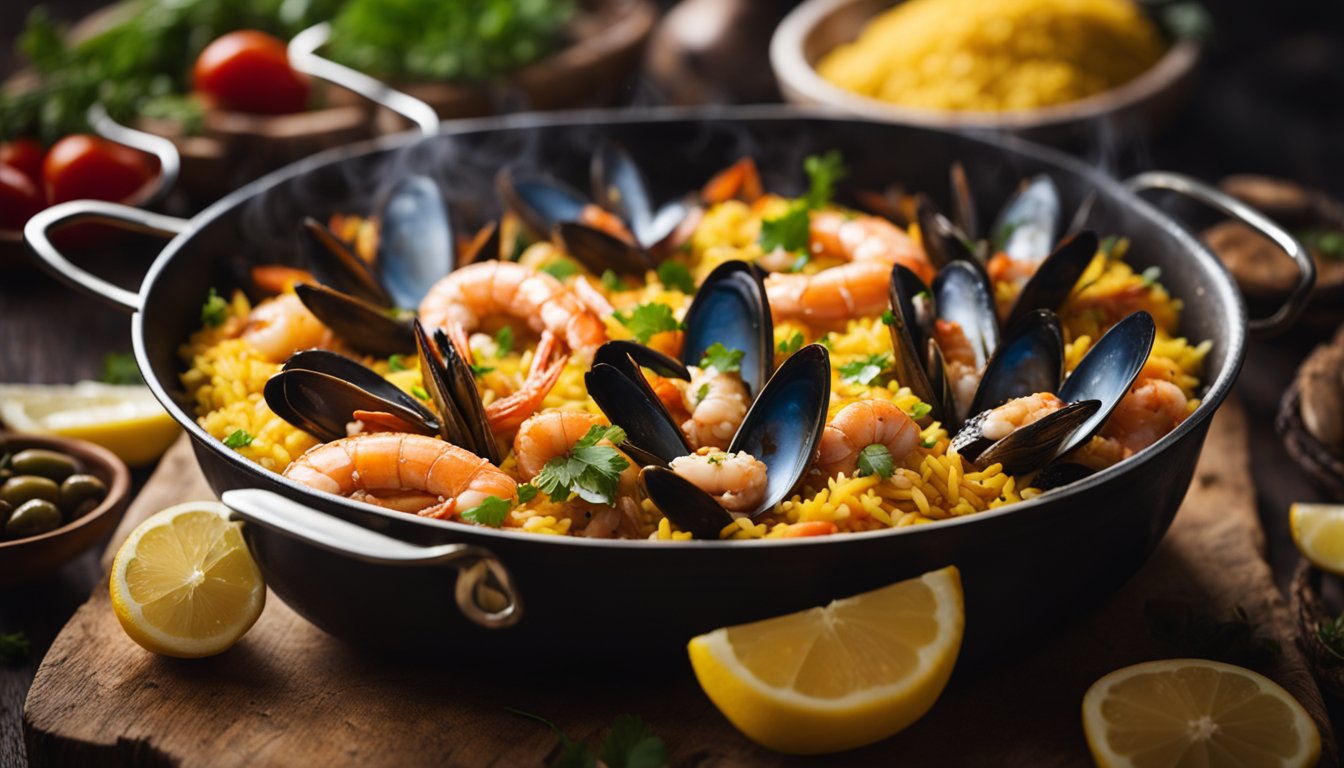
What's the perfect pan for cooking up a storm with a traditional seafood paella in Singapore?
When it comes to cooking a traditional seafood paella in Singapore, the perfect pan is essential. You want a pan that is large enough to hold all the ingredients but not so large that the rice will spread out too thin. A paella pan is the perfect choice for this dish. It is a wide, shallow pan with sloping sides that allows for even cooking and perfect caramelization of the rice. You can find paella pans in various sizes and materials, but a carbon steel paella pan is the traditional choice.
Can you suggest a vegetarian alternative that still captures the essence of a traditional Singaporean paella?
If you're a vegetarian or just looking for a meat-free alternative to a traditional seafood paella, you can still capture the essence of the dish with a few simple substitutions. Instead of seafood, you can use a variety of vegetables, such as artichokes, bell peppers, and green beans. You can also add some saffron for that traditional paella flavour. Another option is to use mushrooms to add a meaty texture and flavour to the dish. With a little creativity, you can still enjoy the delicious flavours of a traditional paella without the seafood.
What are the time-honoured techniques for preparing a traditional paella that's bursting with flavour?
Preparing a traditional paella that's bursting with flavour requires a few time-honoured techniques. First, you want to make sure you're using the right type of rice. Short-grain rice, such as Calasparra or Bomba, is the traditional choice for paella. It has a high starch content that allows it to absorb the flavours of the other ingredients.
Next, you want to make sure you're using a good quality saffron. This spice is what gives paella its distinctive flavour and colour. To get the most out of your saffron, you should toast it in a dry pan before adding it to the dish.
Finally, you want to make sure you're cooking the paella over an open flame. This allows for even cooking and the perfect caramelization of the rice. Don't be afraid to let the rice form a crust on the bottom of the pan, as this is a sign of a well-cooked paella.
By following these time-honoured techniques, you can create a traditional paella that's bursting with flavour and sure to impress your guests.


